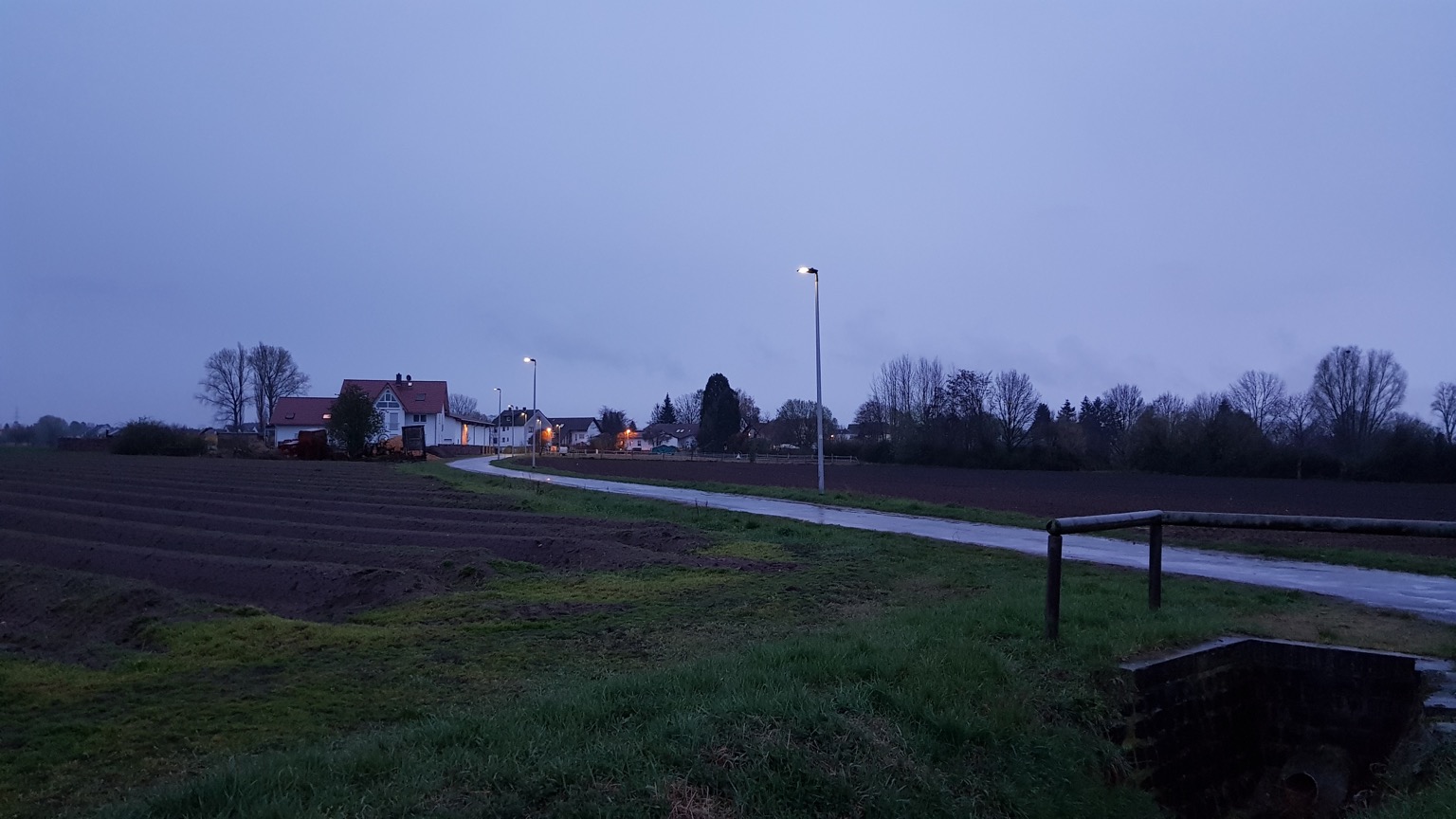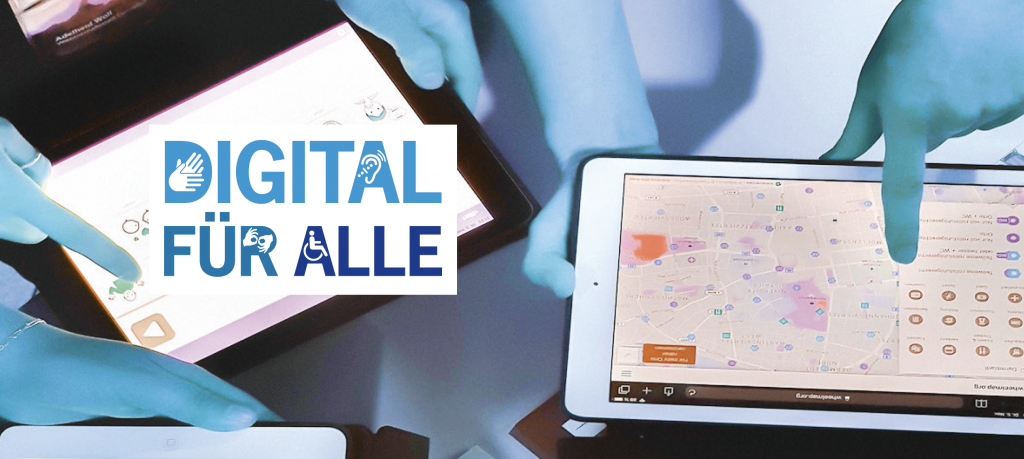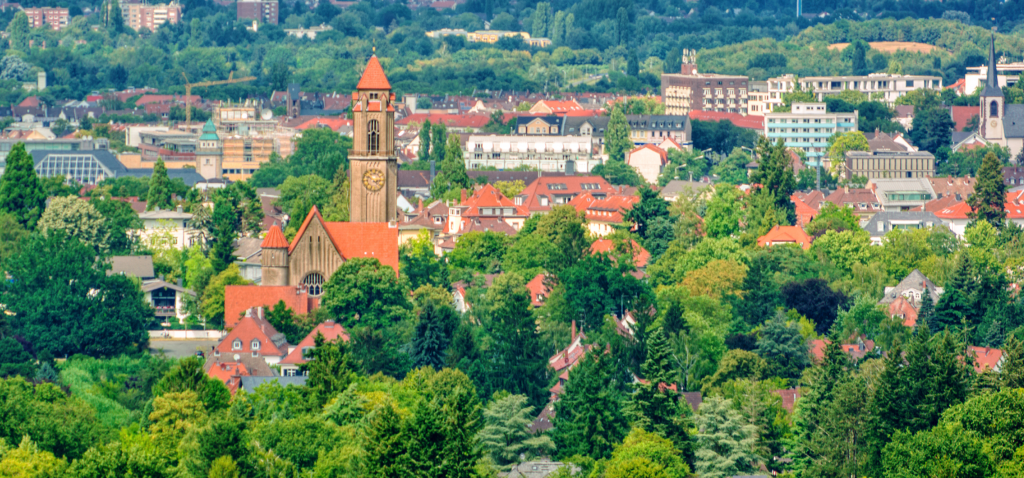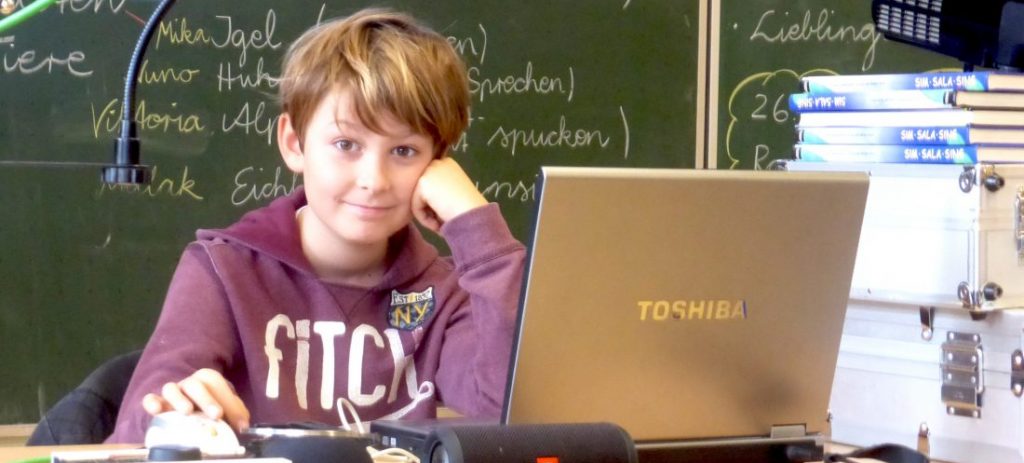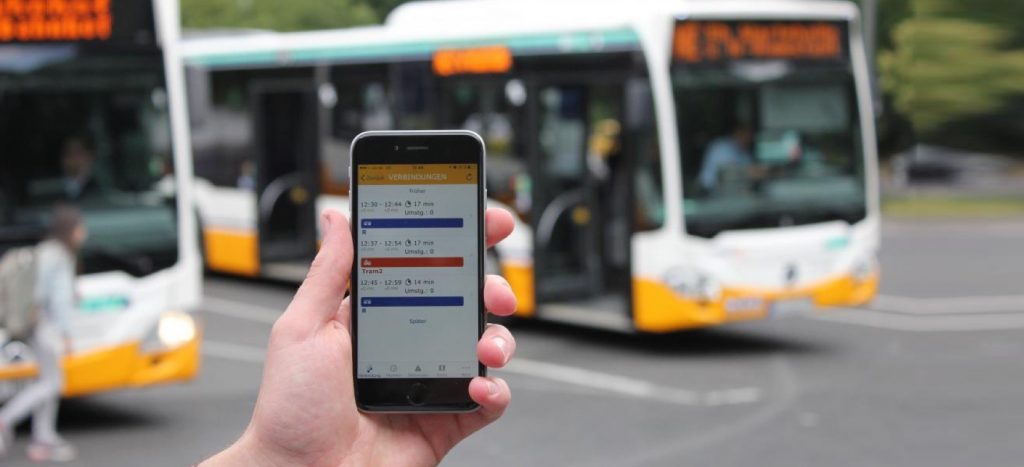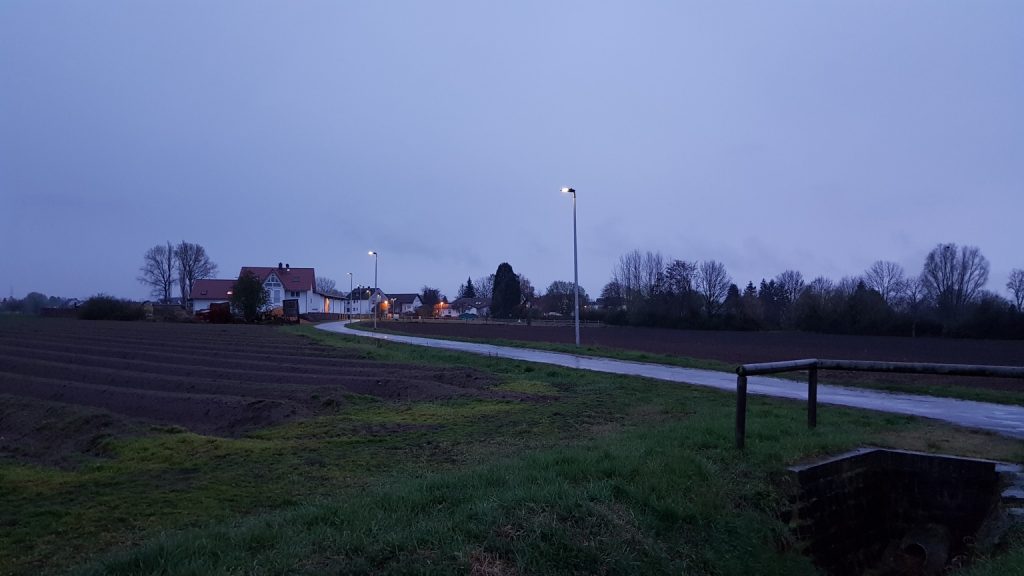Light on, light off - just as needed.
When coming from the north, you may notice 17 street lights lined up like pearls on a string. These lights are the subject of a joint project involving ENTEGA AG, e-netz Südhessen GmbH & Co KG, LUXSTREAM GmbH and Tridonic GmbH & Co KG. The almost 300-metre-long route is only open to pedestrians and farm traffic. It is primarily used by walkers and cyclists on the way to the Hessenwaldschule, a nearby school, and by horse riders from the farms between Wixhausen and Erzhausen.

Mit dem Laden des Videos akzeptieren Sie die Datenschutzerklärung von YouTube.
Mehr erfahren
A pool of light for walkers and cyclists
At dusk, a woman and her dog unexpectedly yet perfectly demonstrate what this project is about. Since the last cyclist left the route five minutes and 55 seconds ago, the street lights have been illuminating the entire road in their full brightness, even though no one is around. ‘56, 57, 58, 59, 60.’ Thomas Bosiacki from LUXSTREAM counts the final seconds down so that everyone can hear. At the end of the six-minute period, all of the street lights dim. Even so, they remain bright enough that the road itself can still be clearly seen. The pedestrian walking her dog now approaches the first street light. Noticing them, the sensor on the light informs the other street lights, and they all suddenly switch on again, creating a bright pool of light for walkers at night. ‘We want to continue to fully ensure the safety of our citizens, but only if the route is also used’, says Stefanie Horchler from ENTEGA.
Adaptive street lighting is what the Smart City is currently testing with its Smart Lighting project by the fields in Wixhausen, as it adjusts to the different conditions. The road does not need to be lit all night to ensure the safety of pedestrians, cyclists and horse riders. If the lights are not needed for six minutes, they dim themselves and immediately go back to full brightness as soon as someone approaches.
Behind all this is modern smart technology. And this is how it works: four of the 17 streetlights are equipped with a PIR sensor from project partner Tridonic. PIR stands for passive infrared sensor. This means the sensor reacts to infrared radiation in its detection area. When a person or another heat-radiating object enters it, the sensor triggers a signal. The street light immediately transmits this information via an antenna (node) to the other street lights, which are also equipped with nodes and together form what is known as a mesh network. In this mesh network, each antenna can communicate with several antennae within its range. The beauty of the system is that if one node fails, the network remains active thanks to the communication between the other nodes – and increases the brightness as soon as a sensor ‘sounds the alarm’.
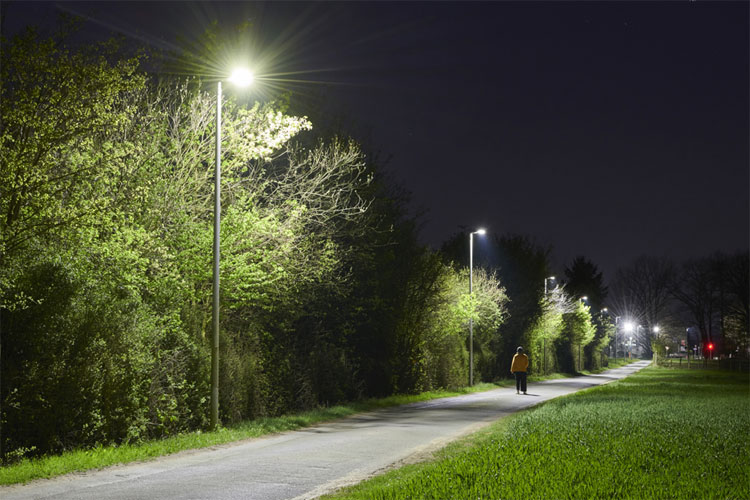
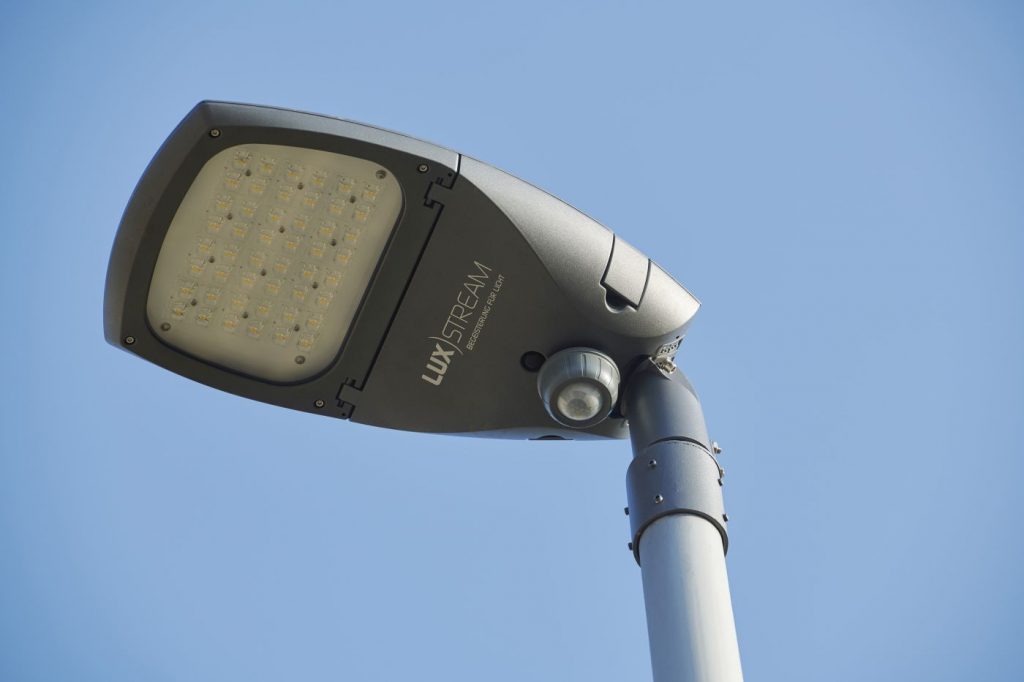
87% energy-saving potential
safety
Those moving along the street will find it brightly lit, otherwise it lies in dim light.
Energy efficiency
The lamps shine brightly only when they are needed.
Exact LED lighting
The light cone can specifically illuminate only public areas, excluding terraces and front gardens.
Environmental aspects
Adaptive lighting avoids unnecessary light pollution. Reporting: Luminaires inform technicians when they fail, provide suggestions for problem resolution, and contribute to lower maintenance costs.
Overview
Data on energy consumption and the interval times of the lighting allow conclusions to be drawn about the energy-saving potential of the system.
Owls make a return
The adaptive control also makes the nights dark again. ‘This prevents unnecessary light pollution, especially here at the edge of a field’, says Stefanie Horchler. This is because nature is sensitive to the increasing use of artificial lighting in urban areas. The project is already making an impact. Since the street lights were installed in spring 2019, owls have been spotted here again. ‘If, for example, special circumstances require the lights to be on at longer intervals or continuous lighting, we can make allowances using the CMS’, says Bosiacki, while highlighting another possible application. If a street light fails, it also notifies the system – and provides a suggested solution. ‘This can dramatically reduce the need for maintenance work and costs, as technicians no longer have to shut down the street lights’, says Daniel San Jocić, the Managing Director of LUXSTREAM.
Adaptive lighting can be particularly attractive for residential complexes or side streets, where there is usually little movement in the evening – also due to the LED technology used. It allows the light to be precisely aligned so that the street lighting only lights up public roads and paths and, unlike previous systems, doesn’t illuminate front gardens and terraces at the same time. ‘Adaptive lighting only lights up areas that need to be lit’, says Stefanie Horchler.
